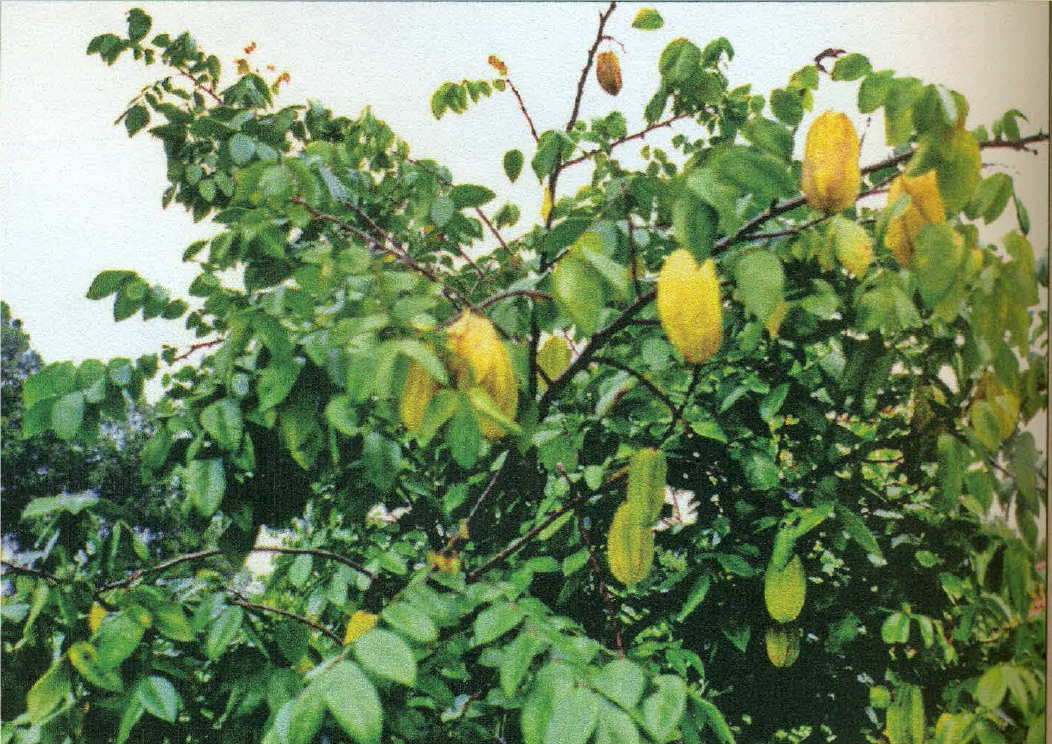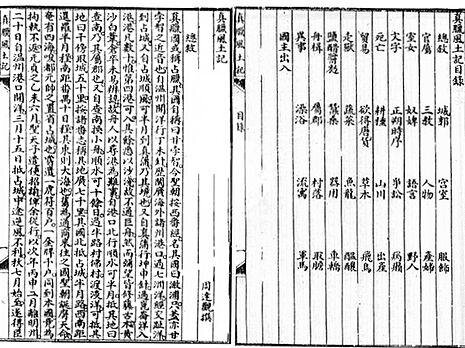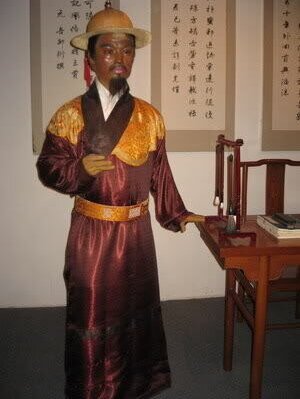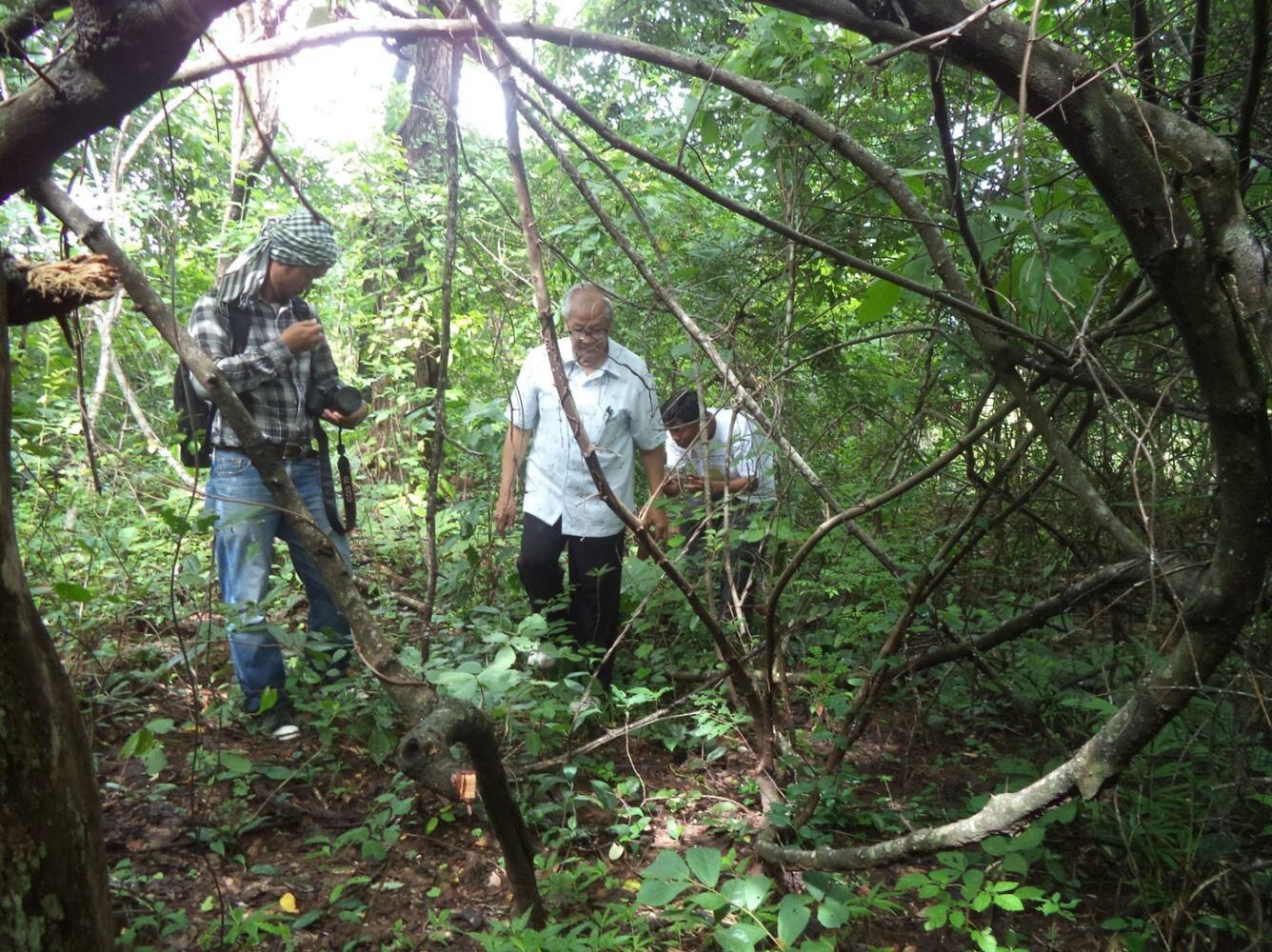Zhou Daguan's Customs of Cambodia: A New Translation
by Zhou Daguan & Solang & Beling Uk
An English translation of the famous text by Zhou Daguan anchoring it to the 'real' Khmer country (Srok Khmer).
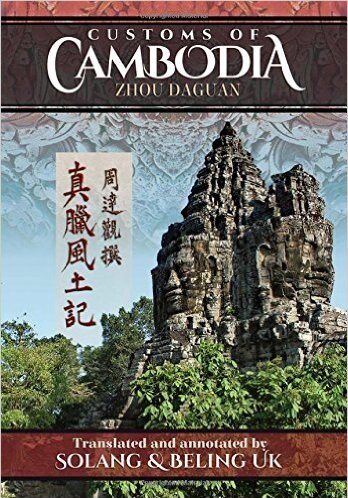
Type: hardback
Publisher: DatAsia Press, Holmes Beach, USA.
Edition: 2d edition
Published: 2016
Author: Solang & Beling Uk
Pages: 146
ISBN: 978-1-934431-18-4
Languages : English, Khmer, Chinese
ADB Library Catalog ID: ZHOU4
Though the Chinese merchant and emissary’s travelogue to Cambodia has been previously translated to French (the oldest one by Jean-Pierre Abel-Ramusat in 1819) and then English, this is the first direct translation from ancient Chinese by authors born in Cambodia and China.
This linguistical and historical prowess was initiated in 2004, when Solang Uk discovered a copy of Zhou Daguan’s vivid relation of the “customs of Cambodia” in a Khmer translation authored by a famous writer killed by the Khmer Rouge, Ly Thiam Teng.
This translation establishes a palpable, vivid link between Zhou Daguan’s description and the ‘real’ Cambodia. For instance, in the part describing the Cambodian (called Zhenla by Zhou Daguan) flora — “There are pomegranates, sugarcane, lotus flowers, lotus roots, carambolas, bananas, and xiongqiong as in China. Although lychees and tangerines are the same in shape as the Chinese ones, they taste sour. There are many other kinds [of fruit] I have never seen in China. Trees are also very different. There are so many· varieties of herbaceous plants and flowers. The flowers are scented and with beautiful vibrant colors. There are even more varieties of flowers in the water, but I do not know their names. As for peaches, plums, apricots, sour plums, pines, cypresses, firs, Chinese junipers, pears, Chinese dates, poplars, willows, osmanthus, orchids, chrysanthemums, this country does not have them. However, there are lotus flowers in the first lunar month.” –, the authors add a photograph of a carambola (star fruit, ផ្លែស្ពឺ [phlae speu] in Khmer) tree, taken by S. Uk in 1999:
Foreword by Amir D. Aczel.
A discussion of previous French, English and Chinese editions by UN Leang.
While cooking, “people of Zhenla (Cambodia) bury three stones in the ground to form a fire stove”, notes Zhou Daguan after his trip to Angkor in 1296. Here below, a cooking pit in a farmer’s house near Kratie in 2018 (Photo DR).
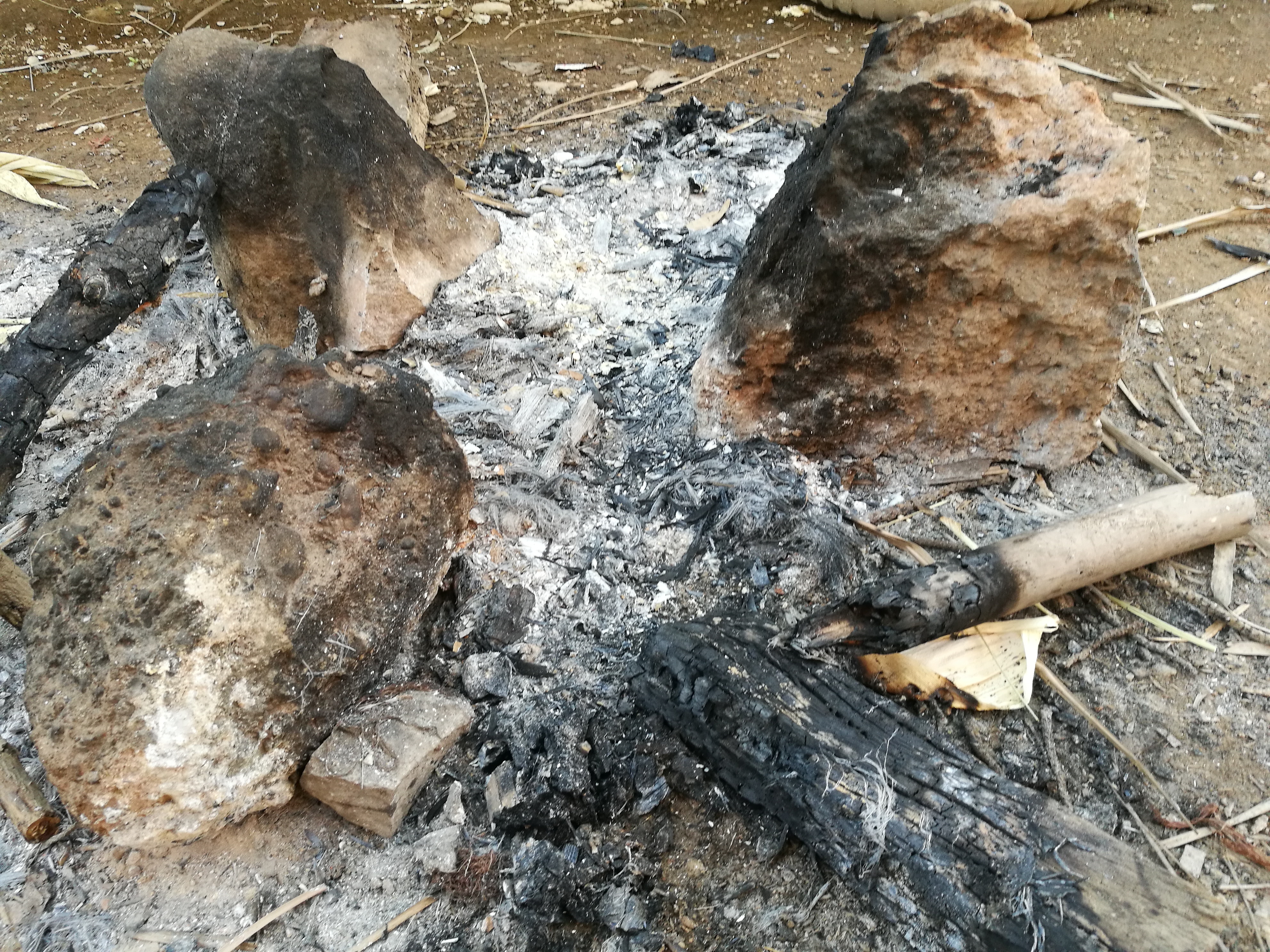
Tags: Zhou Daguan, travelogue, Khmer history, Khmer traditions, 13th century, translations, material culture, Chinese travelers
About the Author
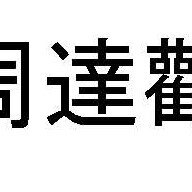
Zhou Daguan
Zhou Daguan (also Tcheou Ta-Kouan, Zhu Daguan) ch 周达观 , kh ជីវតាក្វាន់ (chiv takvan), vn Chu Đạt Quan, th โจวต้ากวาน (cho wta kwan)(c. 1270, Yongjia (modern Wenzhou) – ? shortly after 1346), a Chinese traveler under the Temür Khan (Emperor Chengzong), authored the sole written and direct account of the customs of Cambodia and the Angkorean power from the 13th century that has been preserved to our days.
Instructed to join an imperial mission to Chenla in 1295, he arrived at Angkor in August 1296 and stayed near the court of King Indravarman III (also named Sri Srindarvarman) until July 1297. We know only a third of his account, The Customs of Cambodia (真臘風土記, Zhēnlà Fēngtǔ Jì, literally The Land and Social Conditions of Chenla), first translated into French by the sinologist Jean-Pierre Abel-Rémusat in 1819 (Description du royaume de Cambodge par un voyageur chinois qui a visité cette contrée à la fin du XIII siècle, précédée d’une notice chronologique sur ce même pays, extraite des Annales de la Chine, Paris, Imprimerie J. Smith, 1819), and later on by Paul Pelliot in 1902 (1) and posthumously in the 1951 edition edited by George Coedes and Paul Demieville. In 2007, the linguist Peter Harris completed the first direct translation from Chinese to modern English.
Coincidentally, Zhou Daguan’s travel to Angkor occurred the same year than “the trader and adventurer Marco Polo arrived back in Venice after twenty-five years’ absence. Legend has it that he was full of stories about his travels in China and other parts of Asia, and about the services he provided to the great khan Khubilai, the founding emperor of the Mongol dynasty then ruling China. That same year, 1295, a young man by the name of Zhou Daguan set sail from Mingzhou, a port on the southeast coast of China. Zhou was headed for Cambodia as part of a delegation sent there by Khubilai’s grandson Temür, who had come to the imperial throne on the death of his grandfather.” (cf. Peter Harris, A Record of Cambodia, p 6).
We still have to conjecture in which capacity Zhou Daguan joined the delegation, but we know he was not a diplomat acting for the Yuan dynasty, nor a trader. The “Summary of the General Catalogue of the Complete Library of the Four Treasures” of the Qing Dynasty, praising the book as “quite comprehensive and rich in meaning, with many details, which can make up for the missing parts of the Yuan History,” mentions its author as a “lettered man.”
As for the name Daguan 达观, which he used after his trip to Chenla, several interpretations have been given: “the one who saw everything”, “at ease in every circumstance”, “who sees the bright side of everything”.
Sinologist and Khmerologist Pascal Médeville is currently working on a novelized account of Zhou Daguan’s life and travels. And in December 2024, Princess Buppha Devi Dance School presented in Phnom Penh the first musical and dance production inspired by the journey of Zhou Daguan, លោក ជីវ តាក្វាន់ បានជួបនគរចេនឡា Zhou Daguan in the Kingdom of Chenla.
Angkor Database recommends the direct translation established from the ancient Chinese text into English by native Chinese Ms. Beling Uk and native Cambodian Solang Uk in 2010 and 2011. Xia Nai’s 1981 Chinese edition of the travelogue remains a reference. The first ever English version published in Bangkok in 1967, entirely from Pelliot’s French text (the1902 version), is mostly notable for its enigmatic author, John Gilman D’Arcy Paul.
Customs of Zhenla has also been translated into:
- Khmer: កំណត់ហេតុរបស់លោក ជីវ តាក្វាន់ អំពីប្រពៃណីនៃអ្នកស្រុកចេនឡា [Chiv Ta Kwan [Zhou Daguan]‘s diary about the traditions of the people of Chenla], tr. Ly Team Teng, 1971, Phnom Penh.
- Thai: โจวต้ากวาน, บันทึกว่าด้วยขนบธรรมเนียมประเพณีของเจินละ เฉลิม ยงบุญ [Record of Chenla’s customs and traditions], tr. Chalerm Yongbunkerd, 2014 (3d edition) — ISBN 978−974−02−1326−0.
- Vietnamese: Chu Đạt Quan, Chân Lạp phong thổ ký [Zhou Daguan, Chenla Land and People], tr. Lê Hương, Saigon, Kỷ Nguyên Mới Pub., Saigon, 1973 [excerpts in Vietnamese here].
- German: Walter Aschmoneit, Zhou Daguan, Aufzeichnungen über die Gebräuche Kambodschas, Studeingemienschaft Kambodschanische Kultur, 2006, 120 p., ISBN13 978 – 3000200724.
- Spanish: Vida y costumbres de Camboya, Relato del viaje de Zhou Daguan a Angkor, by Astrid Haardt, CreateSpace Independent Publishing Platform, 2013, 108 p., ISBN13 978 – 1478384496.
(1) In Antoine Brébion’s Dictionnaire Bibliographique, the entry Tcheou-Ta-Kouan states: ‘Lettré chinois du XIIIe siècle de notre ère, qui avait pour appellation Ts’ao-T’ING; il était originaire de Yong-Kia au Tchô-Kiang, il suivit l’ambassade chinoise envoyée au Cambodge en 1295, il revint en Chine en 1297. Le très érudit sinologue qu’est M. P. PELLIOT, de l’Ecole française d’Extreme-Orient, lui a restitué la paternité d’une relation intitulée Description du Cambodge, qu’ABEL DE RÉMUSAT avait attribuée à MA-TOUAN-LIN.’ [Chinese erudite from the 13th century CE, who was named Tsao-Ting, hailing from Yong-Kia in Tcho-Kiang. He followed the Chinese embassy sent to Cambodia in 1295, traveling back to China in 1297. The most learned sinologist Mr P. PELLIOT, from EFEO, has given back to him the autorship of a text titled ‘Description of Cambodia’, previously attributed to MA-TOUAN-LIN by ABEL DE RÉMUSAT.]
About the Translator
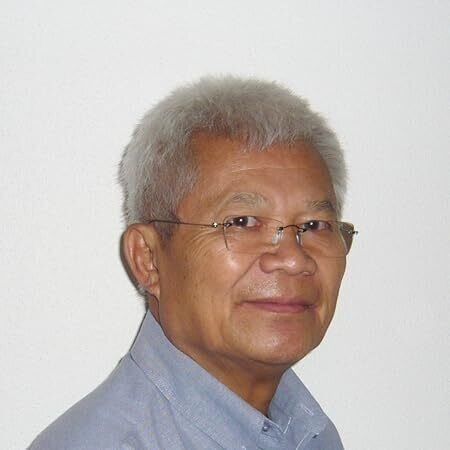
Solang & Beling Uk
Solang (b. Tuk Meas, Cambodia) and Beling (b. Hunan, China) Uk are the authors of the first translation of Zhou Daguan’s account on Angkor in the 13th century sourced from Chinese and Khmer versions of this essential testimony about the Angkorian power at its peak, before the Siamese and Cham invasions.
Resettling in the USA in the 1960s, Uk Solang joined the CIBA-Geigy Agricultural Aviation Research Unit as a research scientist in 1972. A consulting researcher on cotton pest control in the Sudan Gezira for 13 years, he lectured at the FAO International Training Courses on Desert Locus Control in Nairobi, Kenya (1975) and in Karachi, Pakistan (1976). In 1985, he became a senior research biologist in Basel, Switzerland, for CIBA-Geigy International Chemicals, which became Novartis Ltd in 1996 through the merger between Ciba-Geigy and Sandoz. During this scientific career, he had authored and co-authored 50 scientific papers that had been published in 12 scientific journals and 17 books and monographs.
After his retirement in 1998, according to his Amazon profile, “I took up my childhood interest in the ancient history of Cambodia which resulted in a published book together with my wife [Beling]- a native Chinese biologist with a degree from the National Taiwan University and a further degree from North Carolina State University: Zhou Daguan — A Record of Cambodia’s Land & Customs [2010, Bright Pen, ISBN 9780755213061], with a 2nd edition entitled Customs of Cambodia — Zhou Daguan.”
Uk Solang also translated the collection of Cambodian legends gathered in Cambodia by Guillaume-Henri Monod in 1898: Women’s Wiles (DatASIA, 2013).
He visited several Khmer temples in Cambodia in 2019 as a member of ZERO Project Advisory Board, noting that only the inscription K‑127, found in Sambaur area, bore “the numerals and the date 604 Çaka year.”

